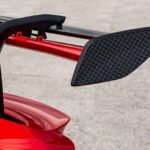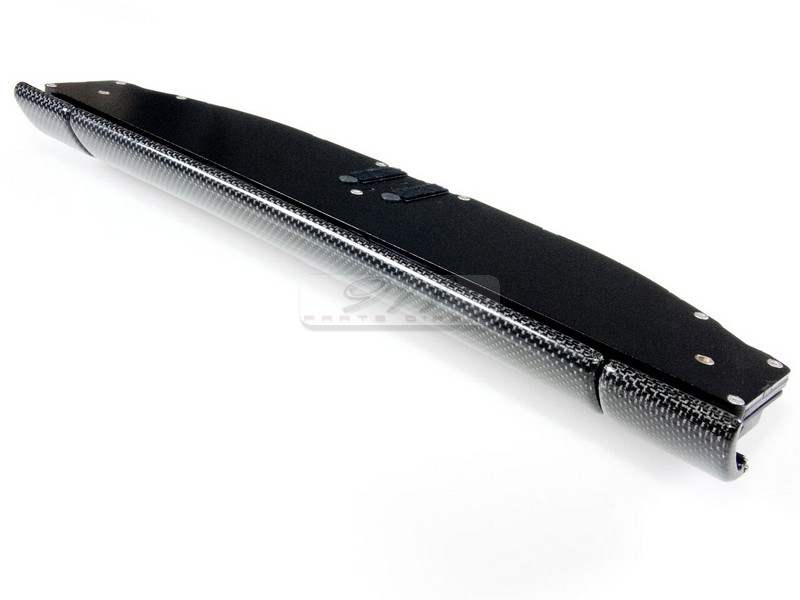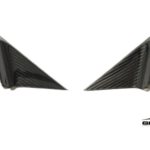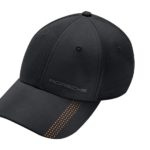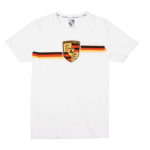Masterminded by Rolf Wütherich and Ferdinand Piech, the R made its competitional debut in 1967 as the lightest Neunelfer of them all. Tipping the scales at 800 kilograms (1,764 pounds) and powered by a 207-hp sixer, the R ended production after only 20 examples were finished.
In the 1970s, la Fédération Internationale de l’Automobile rolled out new regulations that allowed the Stuttgart-based automaker to add two extra inches to the front and rear tracks of the 911. That’s how the ST was born, a very rare car that weighs 960 kgs (2,120 lbs) in its lightest specification.
Both carbureted and injected STs were produced, with the 1972 high-butterfly 2.5 serving as the magnum opus of the breed. Competitional successes for the ST include the 1000 km Nurburgring endurance race, Targa Florio road race, Sebring 12 Hours, as well as the Daytona 6 Hours.
By adding two inches to the wheel arches, Porsche could accommodate slightly wider tires and wheels both up front and out back. Porsche didn’t have 9.0-inch Fuchs wheels for the rear axle, which is why Minilite rears were used in combination with 7.0-inch Fuchs wheels for the front axle. Said modifications wouldn’t have had a massive impact on the vehicle’s on-track performance without a number of weight-saving measures. For starters, thinner-gauge steel was used in several areas. Minimal paint also needs to be mentioned, as well as no soundproofing or undersealing.
Deletions further include the ashtray, sun visors, heating ducts, seat slide supports, glove box lid, and rear torsion bar covers. Plastic was used for the front and rear bumpers, as well as the front lid. Last but certainly not least, lightweight Plexiglas rear and side windows pretty much sealed the deal. The ST is coming back in 2023, probably as a 2024 model in the U.S. market, but with a twist. Rather than a track monster, the second coming is expected in the form of a road-going special edition that will borrow a few bits and pieces from the 992-generation GT3 and GT3 RS.
First spied back home in Germany at the beginning of December 2022 while testing in the rain, the ST is a heritage car that will sit above the Sport Classic in the lineup. To whom it may concern, the 911 Sport Classic retails at a simply unbelievable $272,300 in the U.S. at press time. Joined at the hip to the Porsche 911 Turbo, this duck-tailed heritage car makes 543 horsepower at 6,750 rpm and 442 lb-ft (600 Nm) at 7,200 rpm.
Given its relation to the GT3 and GT3 RS, the ST is rocking a free-breathing sixer with more than 500 ponies on tap. Recently spied testing in sub-zero weather in Sweden, the limited-run model certainly benefits from a number of weight-saving measures. Unlike the GT3 and GT3 Touring, this Touring-style interpretation of the GT3 RS features the carbon-fiber doors and conventional door handles of the GT3 RS. The front aero trickery is closely related to the GT3 RS as well, which probably means that it will feature the GT3 RS’ DCT.
The lightest version of the GT3 RS tips the scales at 1,450 kilograms (approximately 3,197 pounds), whereas the manual-equipped GT3 is officially rated at 1,418 kilograms (approximately 3,126 pounds). Given that the ST doesn’t feature the swan-neck rear wing of the GT3 RS, its DIN unladen weight should be somewhere between the GT3 and GT3 RS.
Pictured with the double-bubble roof of the Sport Classic, the ST also rocks centerlock wheels. The pictured prototypes are equipped with winter tires, which is only natural in cold weather testing conditions, but the real deal should come with super-sticky rubber shoes supplied by Michelin.















Article Credits: Mircea Panait
Full Articles: https://www.autoevolution.com/news/new-porsche-911-st-plays-in-the-snow-flaunts-double-bubble-roof-and-centerlock-wheels-207595.html








